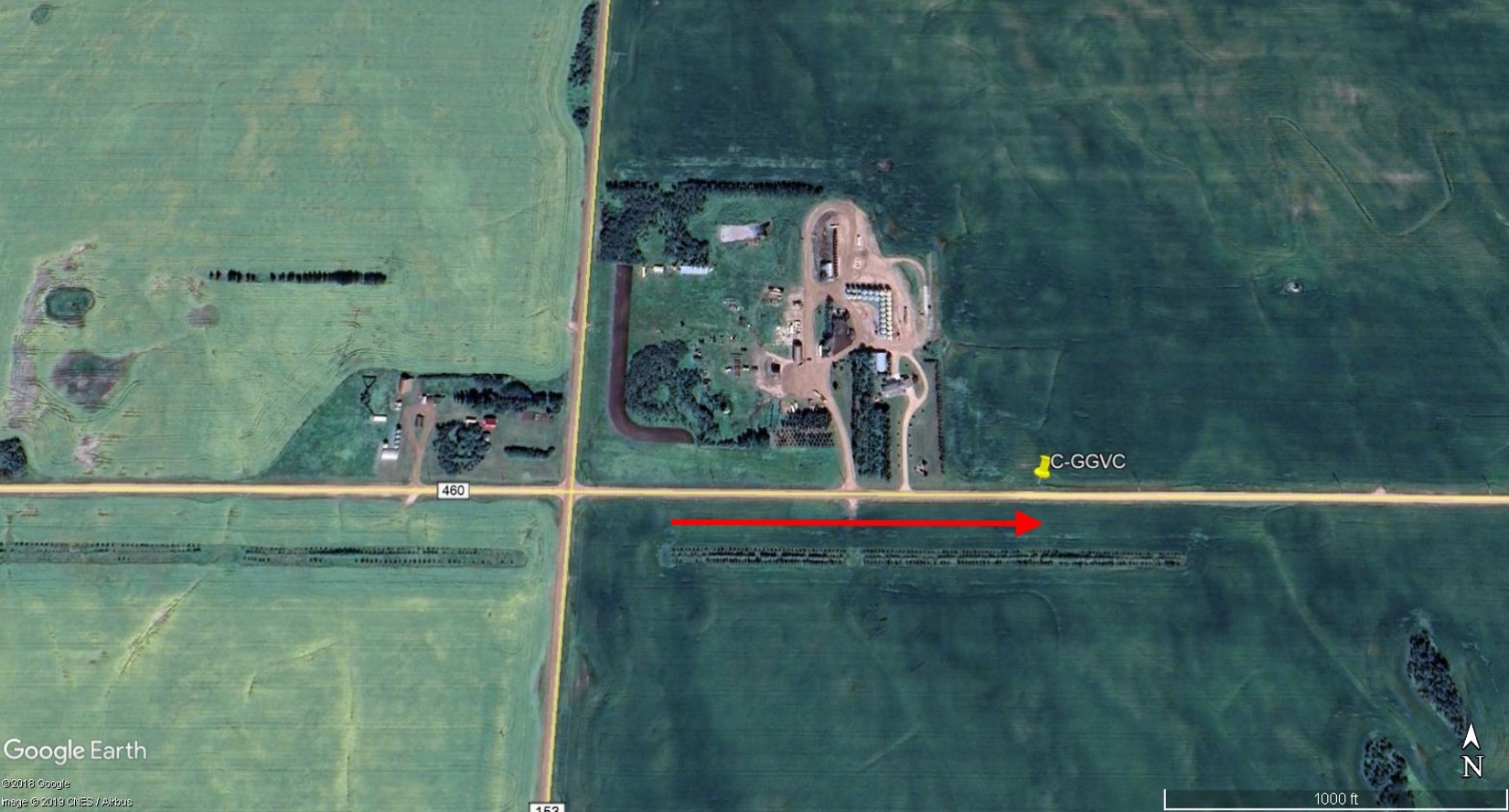Piper PA-18-150
Camrose, Alberta
The occurrence
On , a privately operated Piper PA18-150 aircraft (registration C-GGVC, serial number 18-7609024X) was conducting a local flight near a farm 25 nautical miles east of Camrose (CEQ3), Alberta. The aircraft had arrived at the farm earlier in the afternoon and picked up a passenger for a short flight. After landing in the field across from the main farm yard just south of the road, and dropping off the passenger, the aircraft took off heading eastbound and climbed out steeply.
At 1645 Mountain Daylight Time, approximately 90 feet above ground level, the aircraft stalled, entered a spin to the left, and struck power lines. The aircraft broke the top insulating wire and then bridged the next two conductor lines with the right wing. The aircraft fell to the ground and burst into flames. The aircraft was consumed by the post-crash fire. The pilot, the sole occupant on board, was fatally injured. The aircraft was equipped with a 121.5 MHz emergency locator transmitter (ELT). No ELT signal was received, and the ELT was consumed in the post-impact fire.
There were no records from NAV CANADA of a flight plan being filed or a weather briefing being given to the pilot.
The aerodrome routine meteorological report (METAR) issued at 1600 for Edmonton International Airport (CYEG), Alberta, located 58 nautical miles west-northwest of the accident site, indicated the following:
- winds 360° true (T) at 10 knots
- visibility 20 statute miles
- ceiling overcast at 2300 feet
- temperature 1°C
- dew point −4°C
- altimeter setting 30.16 inches of mercury
The aircraft was found in the ditch on the north side of Township Road 460, 1500 feet east of Range Road 153. The aircraft fuselage was oriented north to south; the impact was non-survivable.
The degree of breakup and damage from the impact and post-impact fire precluded any detailed assessment of the flight control circuit and aircraft systems. The portions of the flight control circuit, engine, propeller, and flight instruments that were examined did not exhibit any failures that would have prevented normal operation.
According to the records reviewed, the aircraft was certified and maintained in accordance with the existing regulations. There were no outstanding defects noted in the maintenance or aircraft logs and the aircraft was being operated within the weight and balance design limits.
The pilot held a private pilot licence rated for single engine land aeroplanes, and a night rating. The pilot’s total flight hours at the time of the accident are unknown. As of 16 July 2019, the pilot had 1373.8 hours total flight time recorded in his personal logbook.
Media materials
Deployment notice
TSB deploys a team following a fatal small aircraft accident near Camrose, Alberta
Edmonton, Alberta, 28 September 2019 – The Transportation Safety Board of Canada (TSB) is deploying a team of investigators to the site of a fatal accident involving a Piper PA-18 near Camrose, Alberta. The TSB will gather information and assess the occurrence.
Investigation information
Download high-resolution photos from the TSB Flickr page.
Class of investigation
This is a class 5 investigation. Class 5 investigations are limited to collecting data, which are then stored in the modal database. If TSB investigators deployed to the occurrence site, a short description of the occurrence is posted to the TSB website once the investigation has been completed. These investigations are generally completed within 90 days. For more information, see the Policy on Occurrence Classification.
TSB investigation process
There are 3 phases to a TSB investigation
- Field phase: a team of investigators examines the occurrence site and wreckage, interviews witnesses and collects pertinent information.
- Examination and analysis phase: the TSB reviews pertinent records, tests components of the wreckage in the lab, determines the sequence of events and identifies safety deficiencies. When safety deficiencies are suspected or confirmed, the TSB advises the appropriate authority without waiting until publication of the final report.
- Report phase: a confidential draft report is approved by the Board and sent to persons and corporations who are directly concerned by the report. They then have the opportunity to dispute or correct information they believe to be incorrect. The Board considers all representations before approving the final report, which is subsequently released to the public.
For more information, see our Investigation process page.
The TSB is an independent agency that investigates air, marine, pipeline, and rail transportation occurrences. Its sole aim is the advancement of transportation safety. It is not the function of the Board to assign fault or determine civil or criminal liability.
